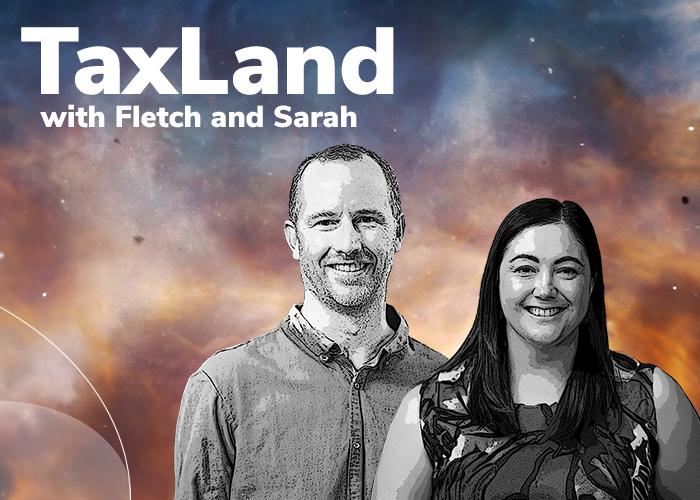Uber now operates around the world and has annual revenue of about US$6.5 billion (and a valuation of about US$80 billion), in no small part thanks to the hundreds of thousands of people it calls its ‘driver partners’. But are ‘driver partners’ employees or independent contractors?
Since its inception, Uber has operated throughout the western world on the premise its ‘driver partners’ are independent contractors. However, much to Uber’s disappointment, there is an ever increasing list of authority suggesting that premise might be wrong.
The distinction really matters. In an article titled Are Uber Drivers Employees? The Answer Will Shape the Sharing Economy, Forbes Magazine last month described the issue as ‘the one legal trouble that would fundamentally threaten its business model’.[note] Forbes Magazine, ‘Are Uber Drivers Employees? The Answer Will Shape the Sharing Economy’, <http://www.forbes.com/sites/omribenshahar/2017/11/15/are-uber-drivers-employees-the-answer-will-shape-the-sharing-economy/#255344fc5e55>, Date published 15 November 2017.[/note] Essentially, this is because hiring workers as independent contractors instead of employees is much cheaper; only employees are entitled to minimum wages, overtime, leave, superannuation, termination pay, workers’ compensation and collective bargaining.
The US
The Uber driver characterisation has been a particularly hot topic in the US, where some sources suggest Uber has as many as 600,000 ‘driver partners’. Unfortunately, there is no clear answer yet.
In January 2017, Miami-Dade’s Third District Court of Appeal found that Darren McGillis was not an employee because he was not obliged to accept pick up requests, was not under supervision in terms of conduct, dress or other typical employee functions. The Court noted:
Uber drivers like McGillis decide whether, when, where, with whom and how to provide rides using Uber’s computer programs […] This level of free agency is incompatible with the control to which a traditional employee is subject.
Perhaps the true level of control exercised by Uber was not fully appreciated in that decision? Because elsewhere around the US (and the UK), Uber has been taken for a ride.
In mid-2015, the Californian Labour Commission ruled in favour of a former Uber ‘employee’ – Barbara Berwick – ordering Uber to reimburse her for costs incurred in the course of her employment. The CLC compared Uber drivers to pizza deliverers who are clearly employees despite often using their own vehicles to conduct a separate company’s business.[note]Berwick v Uber Technologies Inc, 10 March 2015, CGC-15-546378, 11-46739-EK.[/note]
And in June 2017, the New York Department of Labour found that three ‘driver partners’ – Jeffrey Shepherd, Levon Aleksanian and Jakir Hossain – were employees. It highlighted:
Uber exercised sufficient supervision and control over substantial aspects of their work as drivers […] Uber did not employ an arm’s length approach to the claimants as would typify an independent contractor arrangement.
and:
Uber took steps to modify the claimants’ behaviour, as typical in an employer-employee relationship […] The overriding evidence establishes that Uber exercised sufficient supervision, direction, and control over key aspects of the services rendered by claimants such that an employer-employee relationship was created.
In other words, Uber exercised a level of control indicative of an employment relationship.
Interestingly, class actions were commenced in California and Massachusetts involving approximately 385,000 drivers, and the actions were settled ‘in-principle’ on terms that Uber could continue classifying its drivers as independent contractors but was required to:
- pay US$100 million to the drivers involved;
- give drivers more information when they are banned from the service;
- not terminate drivers ‘at will’; and
- create a ‘Driver Association’ to address drivers’ concerns.
Clearly, the terms of the settlement indicate Uber was concerned by the likely findings.
However, the San Francisco District Court rejected the proposed settlement on the basis it was not ‘fundamentally fair, adequate, and reasonable’ to the Uber drivers involved.
Watch this space …
The UK
Unlike the US, a recent UK decision suggests the position there is quite clear.
In November 2017, the Employment Appeal Tribunal of London carefully scrutinised Uber’s claim that its ‘driver partners’ were independent contractors in the decision of Uber B.V. and Others v Mr Y Aslam and Others: UKEAT/0056/17/DA. It found they were in fact employees, affirming the first instance decision of the London Central Employment Tribunal.
To put it bluntly, the EAT was scathing of Uber.
The EAT began by analysing core facts of Uber’s system, balancing them as suggestive of either independent contractor or employee:
[table id=10 /]
The EAT summarised the Employment Tribunal’s decision at first instance, noting there was no capacity for drivers to ‘grow their businesses other than spending more hours at the wheel‘ and that:
The notion that Uber in London is a mosaic of 30,000 small businesses linked by a common ‘platform’ is to our minds faintly ridiculous.[note]Uber B.V. and Others v Mr Y Aslam and Others: UKEAT/0056/17/DA at [68].[/note]
However, the most poignant remark by the ET (which was affirmed on appeal by the EAT) related to Uber’s suggestion that its function could be characterised as supplying drivers with ‘leads’. The ET noted drivers ‘do not and cannot negotiate with passengers’ and therefore the suggestion that drivers are ‘put into contact with a possible passenger with whom he has the opportunity to negotiate and strike a bargain’ is ‘pure fiction’.
Ultimately, the Employment Appeal Tribunal affirmed the ET’s decision that Uber’s ‘driver partners’ are employees. In particular, it found that a driver partner was an employee as soon as he or she was in the territory, ‘logged on’, and able to work, or as soon as they accepted a trip.
The EAT rejected Uber’s argument that there was an agency arrangement, on the basis there was no contract between driver and passenger, and any contract between Uber and passenger was formed long before the driver became involved.
In its concluding remarks, the EAT opined:
On the ET’s findings of fact in this case, I do not consider it was wrong to hold that a driver would be a worker engaged on working time when in the territory, with the app switched on, and ready and willing to accept trips (“on duty”, to use Uber’s short-hand). If the reality is that Uber’s market share in London is such that its drivers are, in practical terms, unable to hold themselves out as available to any other [Private Hire Vehicle] operator, then, as a matter of fact, they are working at [Uber’s] disposal as part of the pool of drivers it requires to be available within the territory at any one time.[note]Uber B.V. and Others v Mr Y Aslam and Others: UKEAT/0056/17/DA at [126].[/note]
With over 40,000 drivers in the UK alone, there is no doubt that the implications for Uber will be significant.
Australia
There have not yet been any cases directly on point in Australia, but would the answer be any different from the UK? Assuming Uber’s relationships with its ‘driver partners’ are the same in Australia as in the UK and US (which is impossible to know for sure without the benefit of pre-trial disclosure), it seems unlikely.
In Australia, whether a person is an employee or independent contractor is determined theoretically by Part 2 – 5 of the Taxation Administration Act 1953 (Cth) and practically by common law. [note]Part 2 – 5 of the Act provides no guidance as to who is an employee or independent contractor. Accordingly, the Australia Taxation Office issued Taxation Ruling 16 of 2005 which essentially refers the question back to the common law. Some of the more well-known cases on point include such as Zuijs v Wirth Brothers Pty Ltd (1955) 93 CLR 561, Stevens v Brodribb Sawmilling Company Pty Ltd (1986) 160 CLR 16, Hollis v Vabu (2001) 207 CLR 21 and ACE Insurance v Trifunovski [2013] FCAFC 3.[/note] The same test is applied in a workers’ compensation context; section 11 of the Workers’ Compensation and Rehabilitation Act 2003 (Qld) (which deals with ‘who is a worker’) simply refers back to Part 2 – 5 of the TAA.
However, the Australian legislation and common law are not dissimilar from the relevant English laws.[note]As an example, the UK Employment Rights Act 1996 defines a ‘worker’ to be an individual who has entered into or works under (a) a contract or employment or (b) any other contract whereby the individual undertakes to do/perform work or services personally for another party without carrying on their own business. That is by no means dissimilar to the Australian position.[/note] Both effectively require a ‘multifactorial’ consideration of:
- the level and manner of control exerted by the principal;
- the degree of integration or organisation (i.e. whether the individual carries on a business of their own);
- whether the individual is paid for time or results;
- the capacity of the individual to delegate;
- who bears the liability and risk (and who is responsible for rectification);
- who provides any expensive equipment or assets;
- whether the individual is required to wear a uniform or otherwise identify the principal; and
- to a limited extent, what terms parties have agreed in the employment or services contract.
Applying that ‘multifactorial test’ to the facts carefully analysed in the UK decision, it seems likely the answer in Australia will be the same as the UK – i.e. that Uber’s ‘driver partners’ are employees.
There might be a definitive answer in Australia soon.
The Ride Share Drivers United, which has more than 1,000 members, lodged a complaint with the Fair Work Ombudsman in May 2017 alleging ‘rampant abuse’ of Australian Fair Work laws. The FWO has since commenced an investigation ‘with the purpose of determining whether the engagement of Uber drivers is compliant with Commonwealth workplace laws’.
In addition to the FWO investigation, the Australian Financial Review reports that the Rideshare Drivers Association of Australia met with the Australian Taxation Office in June 2017 and provided information to assist a review of driver classification.[note]Australian Financial Review, ‘Uber faces Fair Work probe for sham contracting’, < http://www.afr.com/news/policy/industrial-relations/uber-faces-fair-work-probe-for-sham-contracting-20170628-gx09zs>, Date published 28 June 2017.[/note]
As it was so eloquently put by Justice Gray in 1989, ‘parties cannot create something which has every feature of a rooster, but call it a duck and insist everybody else recognise it as a duck’.[note]Re Porter (1989) 34 IR 179, 184.[/note] So too, it might be, with Uber.





